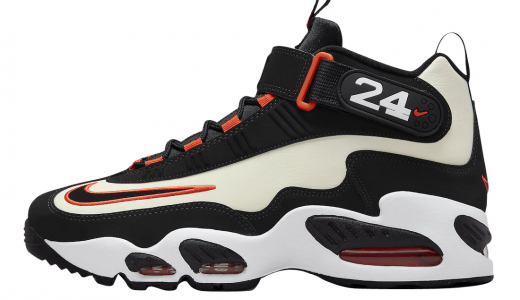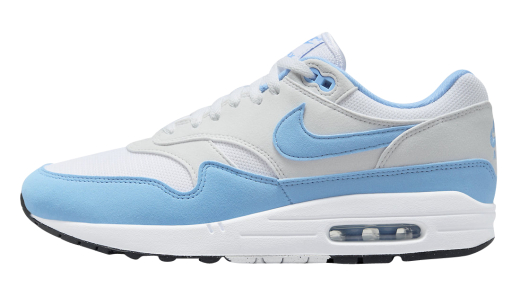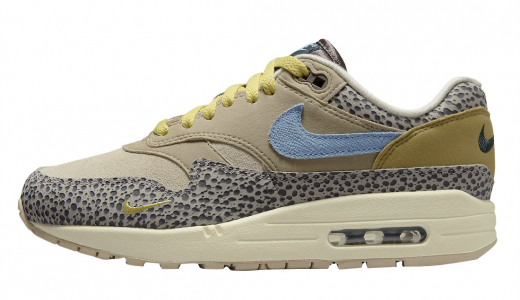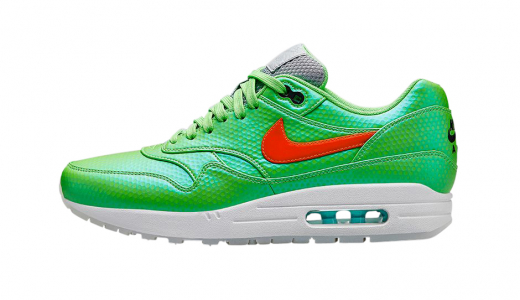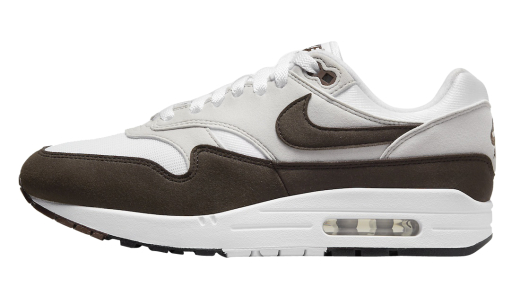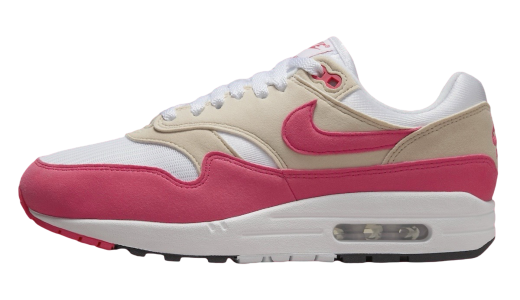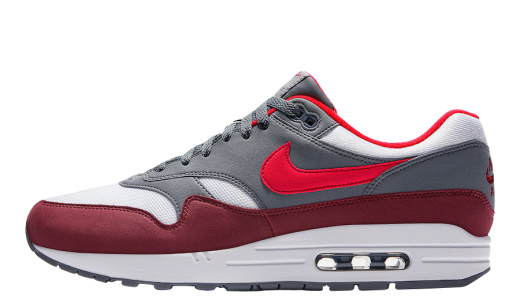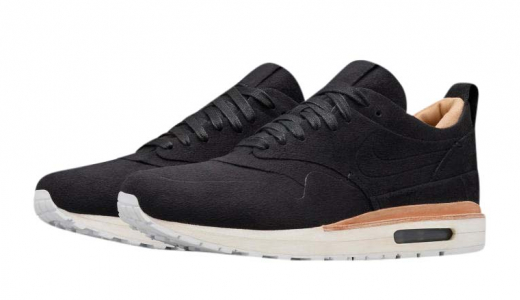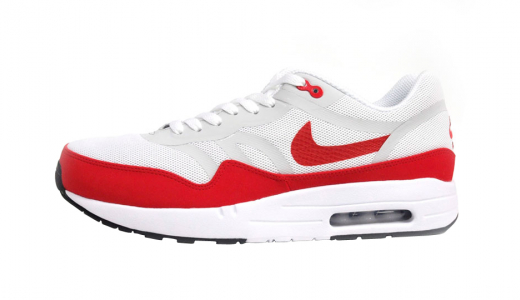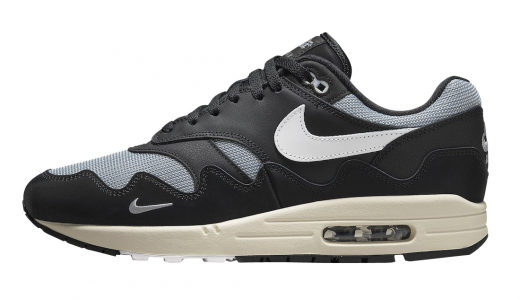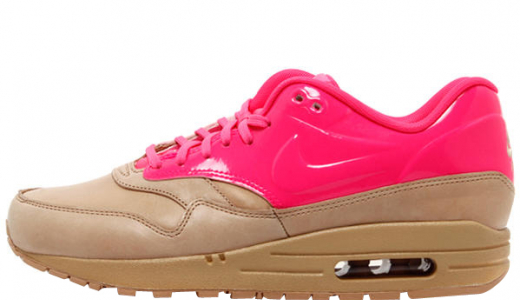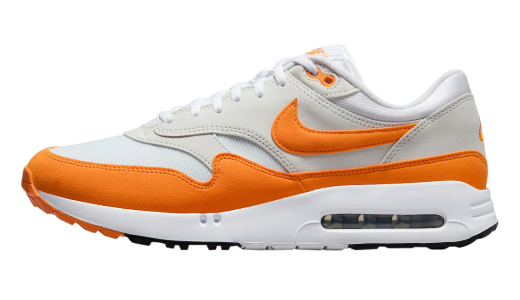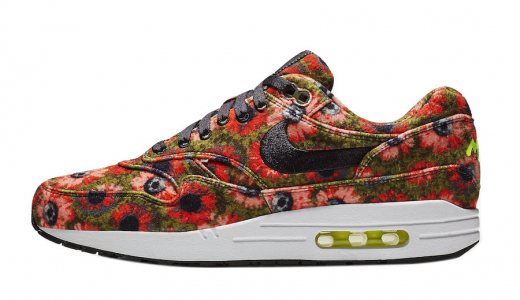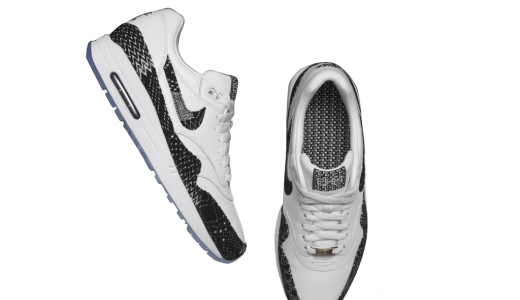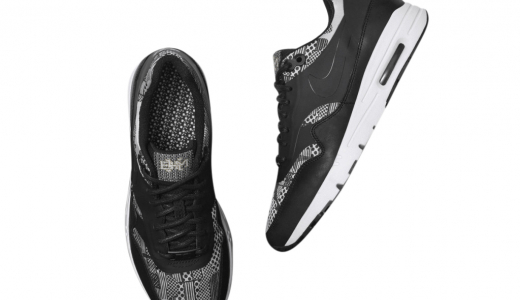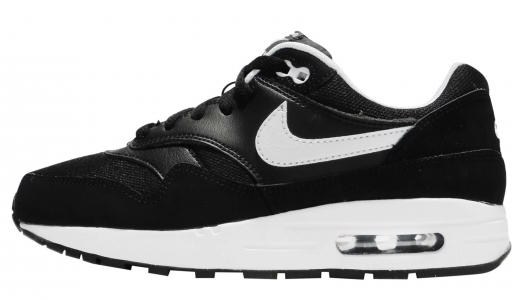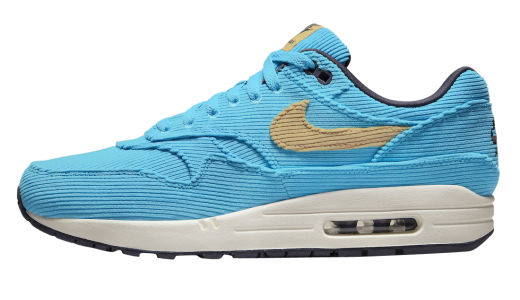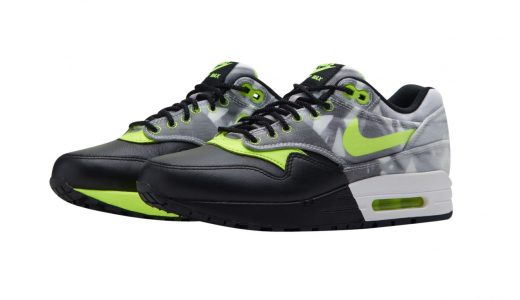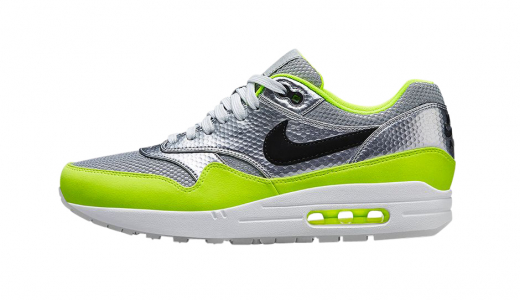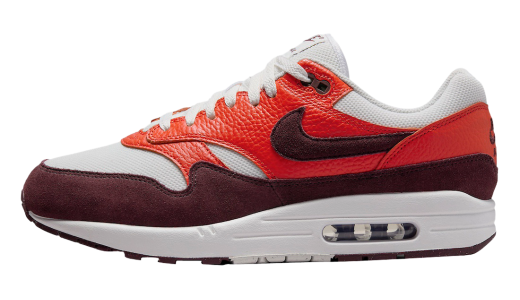Nike Air Max 1
The Nike Air Max 1 is an iconic sneaker that revolutionized the athletic footwear industry when it debuted in 1987. Designed by the renowned Tinker Hatfield, the shoe was the first to feature a visible Air cushioning unit in the sole, which not only provided unparalleled comfort and support but also introduced a bold, innovative aesthetic. The concept was inspired by the Centre Pompidou in Paris, an architectural marvel that flaunts its internal structure on the outside. This translation of architecture to footwear gave the Air Max 1 a distinct personality, instantly making it a cultural phenomenon. The shoe's initial release in its original colorway of white, red, and grey became an instant classic, setting a high benchmark for performance and style.
Since its inception, the Nike Air Max 1 has transcended its roots as a high-performance running shoe to become a fashion and lifestyle staple. It has been released in numerous colorways and collaborations, each telling its own unique story while maintaining the timeless design that made it famous. From artists and athletes to everyday sneaker enthusiasts, people of all walks of life have embraced the Air Max 1 for its versatility and enduring appeal. The silhouette's adaptability has also allowed it to remain relevant in an ever-evolving sneaker culture, retaining its status as a must-have in collections around the world. Its impact is seen not only in the proliferation of subsequent Air Max models but also in the continual homage paid by various subcultures that celebrate its legacy.
History of Nike Air Max 1
The History of Nike Air Max 1
The Nike Air Max 1, a revolutionary sneaker that first hit the market in 1987, represents a monumental moment in both sneaker design and athletic wear. The brainchild of designer Tinker Hatfield, the Air Max 1 has since become an icon of sport and style, influenced innumerable trends, and cemented its place in the annals of sneaker history. This comprehensive history will delve into the origins, development, key milestones, and the cultural significance of the Nike Air Max 1 over the decades.
Origins and Conception
The 1980s were a period of innovative experimentation for Nike as the company sought to solidify its place at the forefront of sportswear and athletic innovation. This decade saw remarkable advancements with the rise of the brand’s innovative cushioning technology known as Nike Air. The Nike Tailwind, released in 1978, was Nike’s first shoe to feature Air technology, using pressurized gas encapsulated in a durable shell to offer enhanced cushioning. However, it was the Nike Air Max 1 that truly brought this technology into the spotlight.
Tinker Hatfield’s Vision
The key to the Air Max 1's creation lies with its designer, Tinker Hatfield, one of the most influential and innovative figures in the sneaker world. Armed with a background in architecture, Hatfield was uniquely positioned to blend technical engineering with cutting-edge design. This background gave him a unique perspective on both the aesthetics and the functional aspects of shoe design.
In the mid-1980s, Hatfield visited the Centre Georges Pompidou in Paris, an architectural marvel characterized by its "inside-out" design, where structural and mechanical elements were visible from the exterior. Inspired by this unconventional design philosophy, Hatfield proposed the audacious idea of giving the Nike Air cushioning system a visible window in the midsole, a concept that had never been done before in sneaker design.
The Genesis of the Visible Air Unit
Hatfield's conception faced initial resistance within Nike. Many executives were skeptical about the aesthetics and durability of a shoe with a visible air unit. Nonetheless, Hatfield's conviction and innovative spirit prevailed. With collaboration from fellow designer Mark Parker, who would later become Nike's CEO, they meticulously worked to make Hatfield's vision a reality.
Their efforts culminated in the creation of the Nike Air Max 1, featuring a revolutionary visible air unit in the midsole, allowing athletes to see and feel the cushioning technology. This design not only set the Air Max 1 apart but also visually emphasized the comfort and performance that Nike Air technology provided. When it debuted on March 26, 1987, it marked the birth of a new era in sneaker design.
Impact and Evolution in the Late 1980s and 1990s
The Nike Air Max 1 was an instant success, combining performance and style in a way that resonated with both athletes and casual wearers. The sneaker’s launch was accompanied by memorable advertising campaigns emphasizing the tagline "Revolution in Motion," cementing its place in popular culture.
Technological Innovations and Iterations
Throughout the late 1980s and 1990s, Nike continued to build on the success of the Air Max 1, releasing subsequent models with enhancements and new design elements. Each iteration retained the core principle of visible Air technology while pushing the boundaries of performance and style.
- **Air Max 90**: Released in 1990, the Air Max 90, originally named the Air Max III, featured a larger Air unit and more aggressive design lines. Its popularity was bolstered by memorable colorways, such as the "Infrared," and it expanded the Air Max legacy further.
- **Air Max 95**: The Air Max 95, designed by Sergio Lozano, introduced a radical silhouette inspired by the human anatomy. With its gradient colorways and multiple visible Air units, it pushed the envelope of innovation and style.
- **Air Max 97**: The Air Max 97, designed by Christian Tresser, drew inspiration from Japan’s bullet trains, featuring a sleek, futuristic design with a full-length visible Air unit for the first time.
Cultural Significance and Collectibility
Over the years, the Air Max 1 has transcended sports to become a cultural icon, embraced by sneakerheads, fashion enthusiasts, and artists alike. Its influence is evident across various facets of society, from streetwear to high fashion.
Sneaker Culture and Collaborations
The Air Max 1 holds a special place in sneaker culture, spawning a dedicated following and a thriving marketplace for collectors. Limited-edition releases, collaborations with artists and designers, and regional exclusives have fueled its desirability and collectibility.
Prominent collaborations have included partnerships with influential figures such as Dutch artist Piet Parra, Japanese designer Hiroshi Fujiwara, and most notably, the "Atmos" collaboration with the Japanese retailer, which has resulted in some of the most sought-after Air Max 1 models.
Fashion and Music Influence
The Air Max 1’s influence extends beyond the sneaker realm into the worlds of fashion and music. In the 1990s, the sneaker became synonymous with hip-hop culture, worn by artists and featured in music videos. Its adaptability and timeless design have made it a staple in streetwear, frequently spotted on the feet of style icons and fashion-forward individuals.The sneaker's presence in high fashion has also been notable, with luxury brands and designers incorporating it into their runway shows and style collections. The blend of performance tech and versatile aesthetics make the Air Max 1 a perfect canvas for creative reinterpretation.
Resurgence and Modern Day Influence
As the years turned into decades, Nike consistently managed to keep the Air Max 1 relevant through re-releases, new colorways, and limited-edition versions that kept the model fresh and desirable. Notable events include the celebration of Air Max Day, first held on March 26, 2014, honoring the anniversary of the debut of the Air Max 1.
Air Max Day and Modern Innovations
Air Max Day has become an annual celebration, marked by special releases, events, and the unveiling of innovative designs. To commemorate Air Max Day, Nike has introduced a blend of retro models and new creations, such as the Air Max Zero, a prototype design that predated the Air Max 1.
Nike has also embraced modern technology and sustainable practices in recent years, with iterations like the Air Max 1 Flyknit, combining the classic silhouette with lightweight, breathable Flyknit material. Additionally, moves towards more environmentally conscious production methods have resulted in models like the Air Max 1 ‘Crater’, made with recycled materials.
The Future of Air Max 1
As Nike continues to innovate and push the boundaries of sneaker design, the Air Max 1 remains a foundational model in the brand’s extensive catalog. A testament to its timeless appeal, the Air Max 1 is set to inspire future generations of designers, athletes, and fashion enthusiasts.
The sneaker’s journey from a controversial prototype to a beloved icon encapsulates the spirit of innovation and persistence. The Air Max 1's visible air unit, once a radical idea, has become a hallmark of modern sneaker design, symbolizing a perfect blend of form and function.
Conclusion
The Nike Air Max 1 is far more than just a sneaker; it’s a symbol of relentless innovation and cultural integration. From its inception in 1987 to its continuing evolution, the Air Max 1 has broken barriers and set new standards in design, performance, and style. The visual representation of Nike’s Air technology revolutionized the sneaker industry, while Tinker Hatfield’s visionary design demonstrated the potential of bold creativity and functional aesthetics.
With each passing year, the Air Max 1 grows in significance and legend, a steadfast icon in the dynamic world of sneakers. It signifies a journey of innovation and creativity, bridging the gap between athletics, fashion, and culture. As it stands, the Air Max 1 is a testament to Nike’s enduring legacy and a beacon for future advancements in sneaker technology and design.
